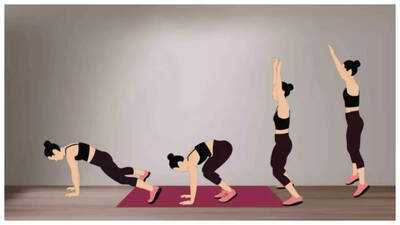When you stop exercising, your heart does not immediately come back to its normal resting rate. The heart returns to its normal rhythm at a gradual pace, during a process called heart rate recovery (HRR). Your one-minute heart recovery rate equals the difference between your heart rate when you finish exercising, and when you measure it one minute later. This basic assessment functions as a significant marker of cardiovascular wellness and fitness capacity. Let's learn more...
What Is One-Minute Heart Rate Recovery...
The speed at which your heart rate drops soon after exercise, is your one-minute heart rate recovery. (measured after 60 minutes). The difference between your post-exercise heart rate of 170 beats per minute (bpm) (for example), and your heart rate of 150 bpm after one minute indicates a heart rate recovery of 20 bpm.

In general, faster recovery rates indicate better health conditions for your heart. The balance of your nervous system between exercise 'fight or flight' responses and post-exercise 'rest and digest' states , leads to this occurrence. Your parasympathetic nervous system activates when your heart rate decreases rapidly, to help your heart recover efficiently.
Why Does Heart Rate Recovery Matter
Heart rate recovery serves as an indicator which shows how your cardiovascular system and autonomic nervous system function together. Your fitness level and heart stress management ability and heart disease risk can be estimated through this measurement.
The American College of Sports Medicine defines good heart rate recovery as 18 bpm or higher within one minute after exercise. A normal heart recovery rate for most individuals falls between 15 and 25 beats per minute. A recovery rate below 12 bpm or lower, may indicate heart problems which require medical testing.
The measure serves as an important assessment tool for athletes and anyone who wants to monitor their heart health. The measurement serves as a tool to monitor fitness development, while detecting possible heart-related health concerns.
Home Methods for Measuring the One-Minute Heart Rate Recovery
Your heart rate recovery measurement requires no specialised equipment to perform. The following easy instructions will guide you through the process:
Start your workout by doing moderate to intense cardiovascular activities like walking quickly or running or cycling or jumping jacks. Make sure your heart rate reaches a substantial level (closer to your peak heart rate. To calculate that subtract your age from 220)
Right after exercise, stop to immediately measure your heart pulse rate. Check your pulse through the radial artery located on your wrist, or the carotid artery situated on your neck. Count the heartbeats for fifteen seconds before multiplying the result by four to obtain beats per minute (bpm). If you wear a fitness tracker, that will do this job for you.
During this minute choose either to sit down calmly, or remain standing (or lying down) and maintain this position for all subsequent tests. Keep your body still, and prevent any conversation and excessive movement throughout this time period.
Measure your heart rate again exactly one minute later using the same procedure.
To calculate your HRR value you need to subtract your heart rate at one minute from your peak heart rate. For example:
Peak heart rate: 170 bpm
Heart rate after 1 minute: 150 bpm
HRR = 170 - 150 = 20 bpm
Regular testing will enable you to detect changes that occur over time.
To get accurate measurements at home you should perform heart rate recovery assessments following exercises of identical type and intensity.
The one-minute resting position must be identical whether you choose to sit, stand or lie down. The results will be more accurate when using consistent methods.
Using a pulse monitor or fitness tracker provides both easier and more precise heart rate measurement capabilities.
You should test when you feel rested, and should avoid consuming caffeine or large meals prior to testing.

Use a journal or app to document your heart rate readings for tracking progress and patterns.
How to Improve Your Heart Rate Recovery
The process of enhancing your one-minute heart rate recovery requires better cardiovascular fitness. The following list provides methods for improving cardiovascular fitness:
Aerobic exercise practiced regularly through walking, running, cycling and swimming, will strengthen your heart while it improves your recovery time.
Interval training which includes brief periods of intense exercise followed by rest intervals promotes better heart rate recovery patterns.
Proper hydration maintains heart operation during exercise activities and subsequent recovery period.
Smoking combined with excessive alcohol consumption, leads to poor outcomes for heart health and recovery times.
Your nervous system will benefit from sleep as well as deep breathing and meditation practices that help you reduce stress.
Gradual workout intensity and frequency increases lead to better heart recovery after exercise and better overall health outcomes.
When to See a Doctor
Slow heart rate recovery below 12 bpm along with poor results may signal heart or nervous system issues. A healthcare professional should be consulted when your heart rate stays elevated beyond normal exercise recovery time, and you experience chest pain or dizziness or shortness of breath.
People with established heart conditions or risk factors should use their heart rate recovery information to help doctors understand their results in relation to their specific health needs.
Sources:
OnePeloton: What is heart rate recovery and how to measure it
Verywell Health: Heart Rate Recovery: What it is, why it matters, how to measure
Cleveland Clinic: Heart Rate Recovery – What it is and how to calculate
PMC article on heart rate recovery and heart disease risks
Disclaimer: This article is for informational purposes only and is not a substitute for medical advice
What Is One-Minute Heart Rate Recovery...
The speed at which your heart rate drops soon after exercise, is your one-minute heart rate recovery. (measured after 60 minutes). The difference between your post-exercise heart rate of 170 beats per minute (bpm) (for example), and your heart rate of 150 bpm after one minute indicates a heart rate recovery of 20 bpm.
In general, faster recovery rates indicate better health conditions for your heart. The balance of your nervous system between exercise 'fight or flight' responses and post-exercise 'rest and digest' states , leads to this occurrence. Your parasympathetic nervous system activates when your heart rate decreases rapidly, to help your heart recover efficiently.
Why Does Heart Rate Recovery Matter
Heart rate recovery serves as an indicator which shows how your cardiovascular system and autonomic nervous system function together. Your fitness level and heart stress management ability and heart disease risk can be estimated through this measurement.
The American College of Sports Medicine defines good heart rate recovery as 18 bpm or higher within one minute after exercise. A normal heart recovery rate for most individuals falls between 15 and 25 beats per minute. A recovery rate below 12 bpm or lower, may indicate heart problems which require medical testing.
The measure serves as an important assessment tool for athletes and anyone who wants to monitor their heart health. The measurement serves as a tool to monitor fitness development, while detecting possible heart-related health concerns.
Home Methods for Measuring the One-Minute Heart Rate Recovery
Your heart rate recovery measurement requires no specialised equipment to perform. The following easy instructions will guide you through the process:
Start your workout by doing moderate to intense cardiovascular activities like walking quickly or running or cycling or jumping jacks. Make sure your heart rate reaches a substantial level (closer to your peak heart rate. To calculate that subtract your age from 220)
Right after exercise, stop to immediately measure your heart pulse rate. Check your pulse through the radial artery located on your wrist, or the carotid artery situated on your neck. Count the heartbeats for fifteen seconds before multiplying the result by four to obtain beats per minute (bpm). If you wear a fitness tracker, that will do this job for you.
During this minute choose either to sit down calmly, or remain standing (or lying down) and maintain this position for all subsequent tests. Keep your body still, and prevent any conversation and excessive movement throughout this time period.
Measure your heart rate again exactly one minute later using the same procedure.
To calculate your HRR value you need to subtract your heart rate at one minute from your peak heart rate. For example:
Peak heart rate: 170 bpm
Heart rate after 1 minute: 150 bpm
HRR = 170 - 150 = 20 bpm
Regular testing will enable you to detect changes that occur over time.
To get accurate measurements at home you should perform heart rate recovery assessments following exercises of identical type and intensity.
The one-minute resting position must be identical whether you choose to sit, stand or lie down. The results will be more accurate when using consistent methods.
Using a pulse monitor or fitness tracker provides both easier and more precise heart rate measurement capabilities.
You should test when you feel rested, and should avoid consuming caffeine or large meals prior to testing.
Use a journal or app to document your heart rate readings for tracking progress and patterns.
How to Improve Your Heart Rate Recovery
The process of enhancing your one-minute heart rate recovery requires better cardiovascular fitness. The following list provides methods for improving cardiovascular fitness:
Aerobic exercise practiced regularly through walking, running, cycling and swimming, will strengthen your heart while it improves your recovery time.
Interval training which includes brief periods of intense exercise followed by rest intervals promotes better heart rate recovery patterns.
Proper hydration maintains heart operation during exercise activities and subsequent recovery period.
Smoking combined with excessive alcohol consumption, leads to poor outcomes for heart health and recovery times.
Your nervous system will benefit from sleep as well as deep breathing and meditation practices that help you reduce stress.
Gradual workout intensity and frequency increases lead to better heart recovery after exercise and better overall health outcomes.
When to See a Doctor
Slow heart rate recovery below 12 bpm along with poor results may signal heart or nervous system issues. A healthcare professional should be consulted when your heart rate stays elevated beyond normal exercise recovery time, and you experience chest pain or dizziness or shortness of breath.
People with established heart conditions or risk factors should use their heart rate recovery information to help doctors understand their results in relation to their specific health needs.
Sources:
OnePeloton: What is heart rate recovery and how to measure it
Verywell Health: Heart Rate Recovery: What it is, why it matters, how to measure
Cleveland Clinic: Heart Rate Recovery – What it is and how to calculate
PMC article on heart rate recovery and heart disease risks
Disclaimer: This article is for informational purposes only and is not a substitute for medical advice
You may also like

Brain in a box: Philadelphia couple sues funeral homes; say dead son's brain handed over as remains

Mukesh Sahani, Tejashwi pay tribute to Phoolan Devi in Patna; hits out at NDA govt

Donald Trump LIVE: US president's 4-word warning as immigration is 'killing Europe'

Donald Trump's mental state 'clear to see' as lawmakers urged to 'act now'

Oasis fans discover new genius way of watching the sold-out shows for free







